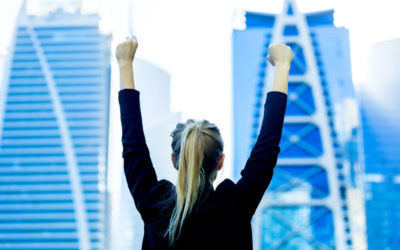Is subscription only an option for the B2C segment or can you also create a successful B2B subscription?
YES, you better believe it!
Everything indicates that the number of B2B subscriptions will EXPLODE in the coming years. Consumers and companies will buy “things” to a lesser extent and instead subscribe to services.
It will include anything companies buy today: software printers, cars, furniture, equipment and machinery. As well as subscription to competencies in HR, IT, administration, etc.
B2B vs. B2C Subscription
About 1/3 of the companies we have counseled in SignUp Academy have been via a B2B subscription, and in the past year I have spent at least half of my time on the B2B segment.
Basically, it is the SAME 20 steps you need to go through to create a successful B2B subscription business, as if it’s a B2C subscription, including:
- An attractive membership offer
- Creating ongoing value
- A successful onboarding process
- Reward of loyalty
Why are these the same steps? Because in both cases, it is about creating as long and deep RELATIONSHIPS as possible with other people, by giving them and their eventual company an ongoing high value of the membership.
But are there any DIFFERENCES between creating a B2C subscription and a B2B subscription?
Yes, there are, and some of the main differences I will go through in this article.
B2B Subscription – Payment
When you as a private individual buy a subscription to, for example, razor blades, music or fitness, you primarily pay monthly and usually via your payment card.
It is different in a company. Here you typically prefer to pay for a longer period – usually once a year – and preferably via a different means of payment than a payment card. For example, via invoice, giro card or bank transfer. If it is a public company (B2G = Business 2 Governance), EAN payment is preferred.
B2B Subscription – Bindings
When I help companies create a successful subscription business, I always advise against running memberships with bindings unless there’s a super good reason to have them. Usually, If you have to bind your members, it’s because the ongoing value you give them is too little. Within B2C, there is usually “no binding”.
But within B2B, a binding period occurs more frequently. For example, if you sell a machine for DKK 300,000 via a subscription for DKK 15,000/month, which you need to spend a working day delivering and installing at the customer, it may make sense to operate with, for example, 3 months of binding from the start and then “no commitment”. The alternative is to charge the customer a start-up fee, but that raises the financial barrier to buying your product, thereby decreasing your sales.
B2b – Who Is the Decision Maker?
As private consumers, we decide on our own money, and we do not have to ask anyone’s permission first. This is often not the case in corporate business. The employee who will use the subscription product or service must often first have it approved by a superior.
This requires you to often have to market your B2B subscription to either a different target group (management) rather than those who will use the product/service, or market your B2B subscription to both target groups. It may well make marketing a little more difficult than with a B2C subscription.
B2B Subscription – Pricing
My experience is that subscriptions to private consumers are typically more price sensitive compared to businesses’ sensitivity.
Both types of subscriptions must provide the user with ongoing “value for money”. But a B2C subscription is probably more often looked at as an expense, as opposed to a B2B subscription which is seen as an investment to run the business. And unless you own the business yourself, you’re probably not nearly as zealous about the company’s expenses as you are about your own private expenses.
In practice, this means that a B2B subscription requires significantly less volume to be lucrative for the provider than a cheaper B2C subscription does.
B2B – The Competitors
In a B2C subscription, you often compete for the costliest parameter: People’s time.
Whether you offer a box subscription, books, games, newspapers, fitness, stress relief, or mindfulness, it needs the user’s time and attention to get value from your membership. And since time is a scarce resscource, you’re basically competing with all the other subscription services, across industries.
In a B2B subscription, you usually only compete with the other services in the industry. For example, if a company needs access to a photo archive, you are competing with other photo service providers, not with all sorts of other subscription services.
B2B Subscription – Marketing
The marketing channels you use to get sales for your subscription may well be the same whether you sell B2C or B2B, but often they won’t be 100% identical.
Digital channels such as LinkedIn, Google, Instagram and Facebook can to a greater or lesser extent work in relation to both B2C and B2B sales. But if you’re selling to a business, you’ll often benefit from segmenting your ads by industries and positions, rather than by interest and demographic data. And you may be successful in creating cold canvas to create sales and other types of sales that are not possible compared to private individuals.
B2B vs. B2C – Summary
As I began by saying, it’s basically the same way you need to construct a subscription business whether you’re selling to consumers or to businesses. I have also helped several companies selling their subscriptions to both B2C and B2B.
However, as stated in this article, there are some differences to consider in order to be successful in selling your B2B subscription and scaling your business. Keeping them in mind will ease your way towards a succesfull B2B subscription business.
To learn more about how to create a succesfull subscription business, take a look at my Best Seller book. You can order it right here
Click here to read more of our articles on subscription business



